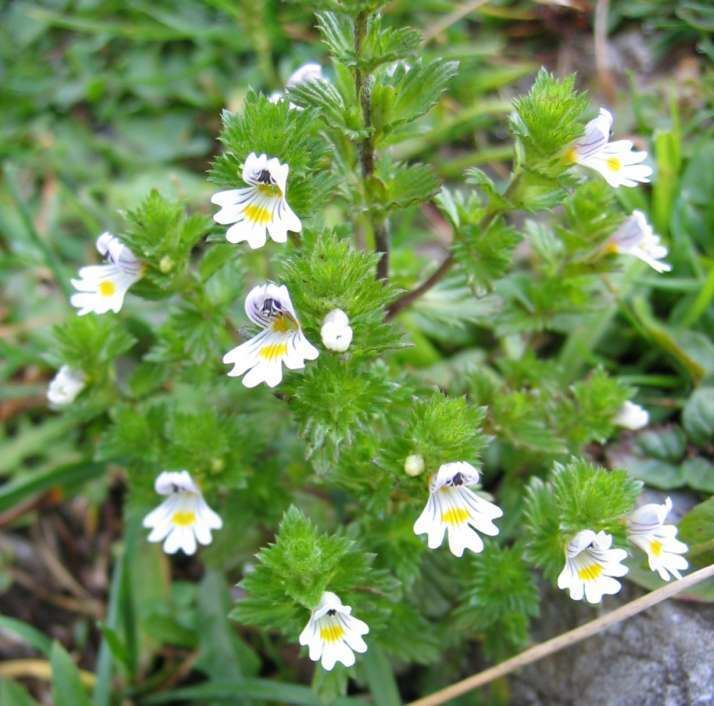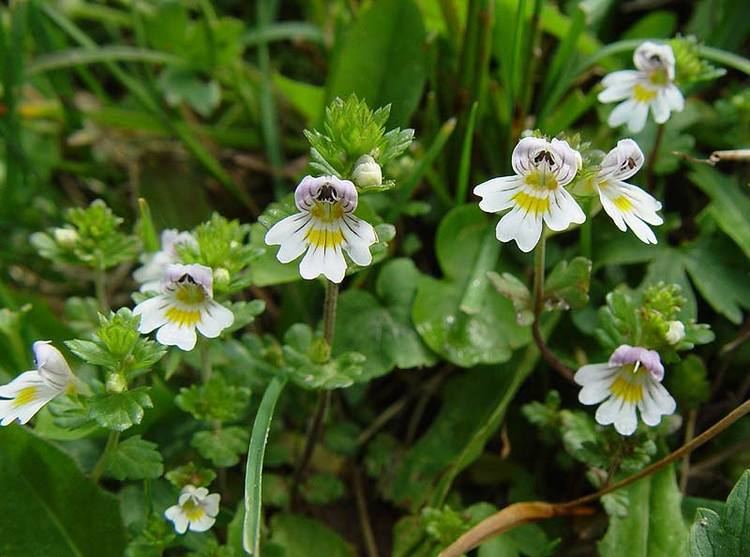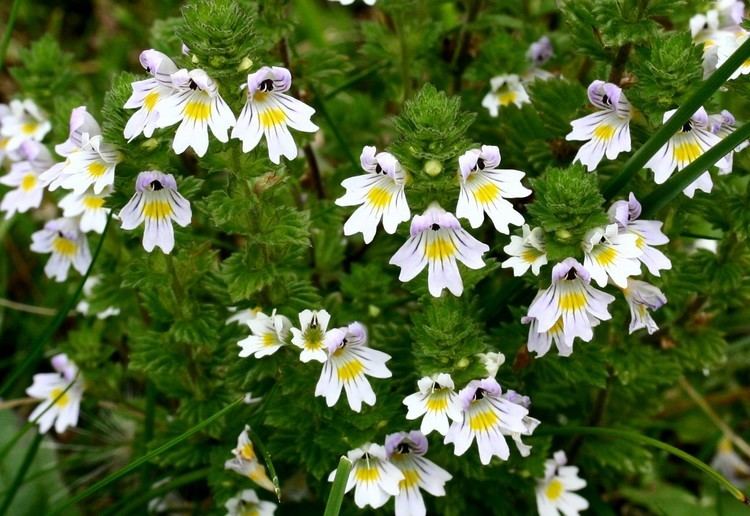Tribe Rhinantheae | Scientific name Euphrasia Rank Genus | |
 | ||
Lower classifications Euphrasia rostkoviana, Euphrasia stricta, Euphrasia salisburgensis, Euphrasia alpina, Euphrasia collina | ||
Euphrasia tip video
Euphrasia (Eyebright) is a genus of about 450 species of herbaceous flowering plants in the family Orobanchaceae (formerly included in the Scrophulariaceae), with a cosmopolitan distribution. They are semi-parasitic on grasses and other plants. The common name refers to the plant's use in treating eye infections.
Contents
- Euphrasia tip video
- Drug eyebright euphrasia stricta 2013 06 23
- Use in herbalism and medicine
- Taxonomy and identification
- References

Many species are found in alpine or sub-alpine meadows where snow is common. Flowers usually are borne terminally, are zygomorphic, and have a lower petal shaped like a lip. The most common flower colours are purple, blue-white, and violet. Some species have yellow markings on the lower petal to act as a guide to pollinating insects.

Alternative names, mainly in herbalism, are Augentrostkraut, Euphrasiae herba, Herba Euphrasiae and Herbe d'Euphraise.
Drug eyebright euphrasia stricta 2013 06 23
Use in herbalism and medicine

The plant was known to classical herbalists, but then was not referred to until mentioned again in 1305. Nicholas Culpeper assigned it to the Zodiac sign Leo, claiming that it strengthened the brain. It was also used to treat bad memory and vertigo.
In the Elizabethan era the plant was used in ales and Gervase Markham's Countrie Farm (1616) recommended that one should "Drinke everie morning a small draught of Eyebright wine."
Herbalists use eyebright as a poultice with or without concurrent administration of a tea for the redness, swelling, and visual disturbances caused by blepharitis and conjunctivitis. The herb is also used for eyestrain and to relieve inflammation caused by colds, coughs, sinus infections, sore throats and hay fever.
Parts used include the leaf, the stem, and small pieces of the flowers. Typical preparations include a warm compress or tea. Eyebright preparations are also available as an extract or capsule.
Taxonomy and identification
The genus Euphrasia is taxonomically complicated due to many species being interfertile and prone to hybridisation. Despite there having been a number of taxonomic revisions the appropriate rank of many taxa as well as the relationships between them remains unclear.
